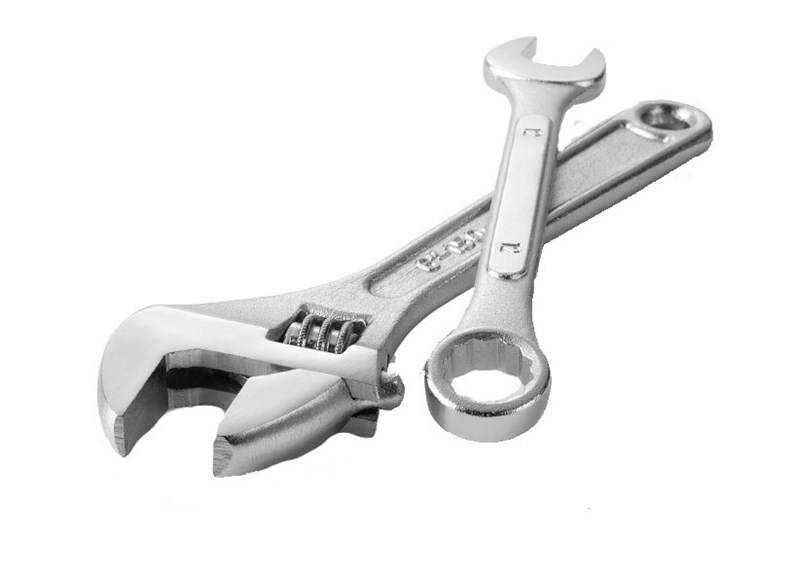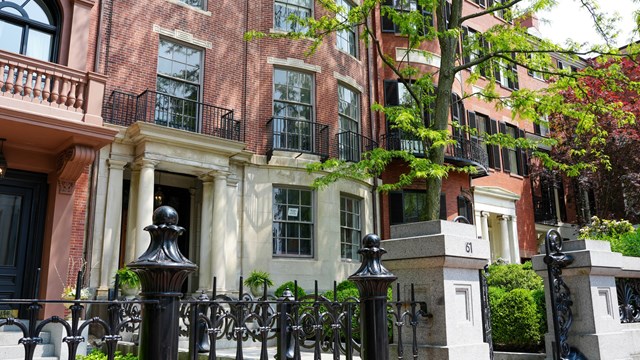In real estate, as in life, first impressions are everything. It certainly holds true for condominiums. Whether it’s a high-rise or part of a community of homes, a building and the way it looks can speak volumes not only to outsiders but to the individuals and families living within its walls. That’s one of the many reasons why maintaining an attractive and functional building exterior or façade can be so important.
Many factors can contribute to the deterioration of a building’s exterior. Happily, though, there are nearly an equal number of actions that can be taken to preserve and protect those facades and envelopes.
Beaten Down
In New England, the topic of weather is one that never gets old. Frigid temperatures, significant snowfalls and the punishing presence of sunshine, rain, wind and sleet means that weather plays a role in every community association in the region. New Englanders are used to enduring even the harshestconditions. Sometimes, though, their buildings may not be.
When it comes to the health and well-being of a residential building, freeze-thaw cycles can be brutal, says Ralph Noblin, president of Noblin & Associates, L.C., a consulting engineering firm based in Bridgewater, Massachusetts. “There is so much moisture in the Boston area,” Noblin says. “Boston does not have a dry season.” In the winter months, when water embeds itself into building materials, temperatures dip below freezing and that water turns to ice, it can cause significant damage. “Ice has tremendous expansive powers,” Noblin says.
Sun, and more specifically, ultravioletradiation (UV) also can cause major damage to the aesthetics and integrity of an exterior. “Everywhere in the country, UV degradation takes its toll,” Noblin says. “If it’s an exterior that’s painted, it’ll fade. Wood will shrink and split.”
Another significant factor in exterior deterioration may take place before the first resident even sets foot in the building. “The underlying issue is low-quality materials and less-than-ideal installation techniques,” says Fred Schernecker, president of SPS, Inc., a Waltham, Massachusetts-based contractor specializing in capital improvements and property maintenance. “Wood siding may show deterioration because it’s a low-cost cedar. Soft pine trim may show deterioration because it absorbs water.” In perfect conditions, the issue of material qualitywould not be a factor, but that’s not how the world works. “A low-quality board installed in a vacuum will last forever,” Schernecker says. Factor in rain, ice and UV rays, though, and those items all put those materials under stress.
Noblin agrees. “Low-quality wood clapboard and soft pine trim deteriorate very quickly,” he says. “Even before you start the first paint job, you’re behind the eight-ball. Same thing with compressed sideboards, which we sometimes call cardboard. Fiber cement siding is also not as durable as they say it is. People have a fascination with newhigh-tech products. They think if it’s high-tech, it must be good.” Because of these existing problems, old time quality materials such as mahogany are making a comeback, Noblin says.
Hand-in-hand with low-grade materials and sub-par installation is neglect. When condo boards and property managers try to put off regular maintenance or do not do regular inspections, exteriors can deteriorate quickly. “A lot of property owners don’t have a preventative maintenance plan or a long-term vision,” says Peter Seoni, vice president and general manager of Stuart Dean, a New York-based architectural restoration and maintenance firm with a regional office in Boston. “By the time damage is noticeable from the curb, it might already have deteriorated.”
For example, if a brick exterior is crumbling, it might be that management only did cosmetic restoration work over the years. “The owner might have done touch-up repointing every ten years,” Seoni says. That repointing would not have gone to the heart of issues that may have been developing. Water may have been seeping behind the façade, and “once it’s open to water infiltration, there may be issues,” he says.
Halting the Decline
Whether natural elements are causing exterior problems or other more man-made issues are at the heart of the trouble, things can be done to prevent, reduce and mitigate their effects on a property. “The simple solution is regular maintenance,” says Schernecker. When it comes to dealing with materials thatwere low-quality upon installation, caring for them properly can help preserve their life spans. “With low-quality cedar siding and pine trim, preparing and painting it regularly will extend things,” Schernecker says.
One of the keys, though, is knowing when to make repairs or add a coat of paint, says Noblin. Specifically with painting, too much of a good thing can cause trouble down the road. “Fifty years ago, paints were oil-based,” Noblinsays. “A paint job could last seven to 12 years.” With the introduction of latex and water-based paints, that range has declined significantly. “Now most condo associations are having to paint every three years,” he says.
Don’t just paint, though, because you think it’s time to paint, Noblin says. “Paint or stain when you need to, when the surface is crying out for protection, not just to make it look better.” The reason? Because too many layers of paint, one on top of the other, can ultimately break the initial adhesion bond with the underlying material, and that means paint will start coming off, likely in big unsightly chunks.
And before painting, Noblin says to make sure that the surface has been properly prepared. Pressure washing done well can add significant lasting power to a paint job. In fact, sometimes, that washing is all that’s needed, nixing the need for a paint job at all. “Put a pressure washer in the hands of someone who knows what they’re doing and they can work wonders,” Noblin says. “Someone who doesn’t, though, can damage wood.”
Inspect, Inspect, Inspect
Planning ahead is vital to the longevity and appeal—structurally and aesthetically—of an exterior. “Maintenance plans should be in place” and followed accordingly, Schernecker says. Appropriate building inspections are a must as well.
Twice a year, most condo community managers will walk the property, looking to see what damage may have been done after a long winter or what things might need shoring up before that long winter begins. In the spring and fall, it’s important for those visual inspections to take place and it’s important to take someone on that tour who knows what to look for.
Sometimes, though, even with the most eagle-eyed observers, things can be missed. That’s why the bigger guns need to be brought in on a regular basis. “Every 10 to 15 years, boards or managers should hire a structural engineer or a firm that specializes in exteriors and envelopes to do a full inspection: test materials, check the façade to make sure it’s still withstanding,” says Seoni. Engineers specializing in exteriors also will be able to look at roofs, windows and other parts of the exterior which are all interconnected to the big picture of the building’s health. “These engineers can also make recommendations on how to proceed. They can write up specs and work with restoration companies to create plans. They can tell you if something needs to be replaced versus being shored up,” he says. In the long run, paying a little extra to listen to anexpert likely will save money down the road.
And really, that’s the key to having an exceptional and long-lasting exterior: investing more at the beginning will pay off down the road. Higher-qualitymaterials, good paint, expert inspections and advice all contribute to creating, keeping and preserving a welcoming façade for the buildings so many people call home.
Liz Lent is a freelance writer and a frequent contributor to New England Condominium magazine.







Leave a Comment